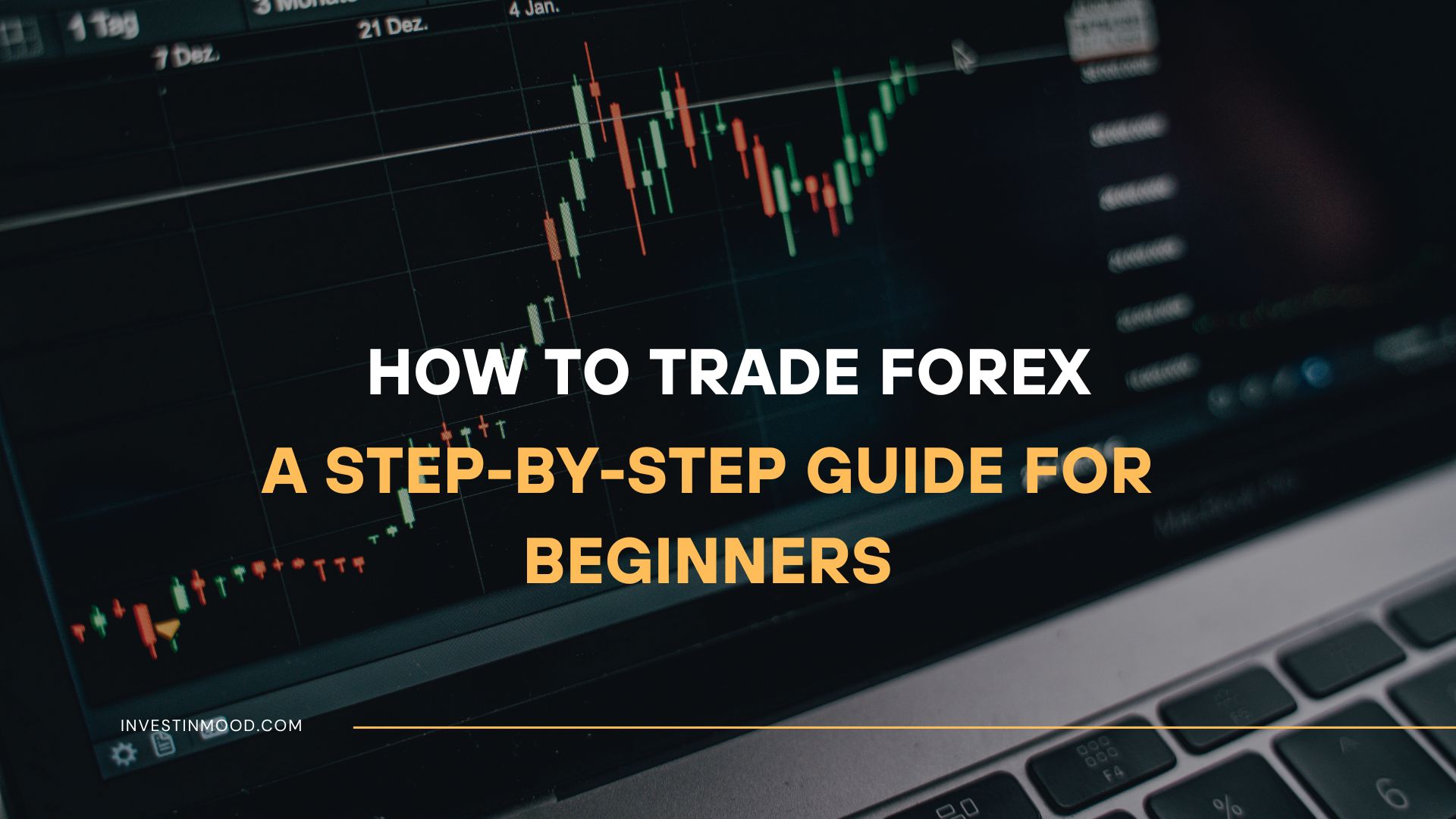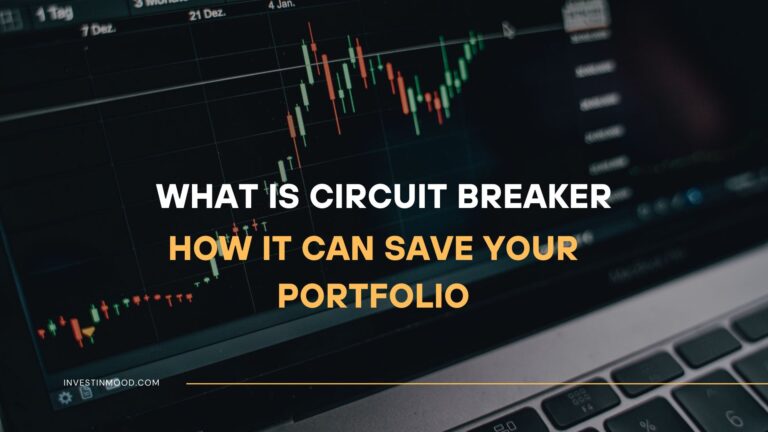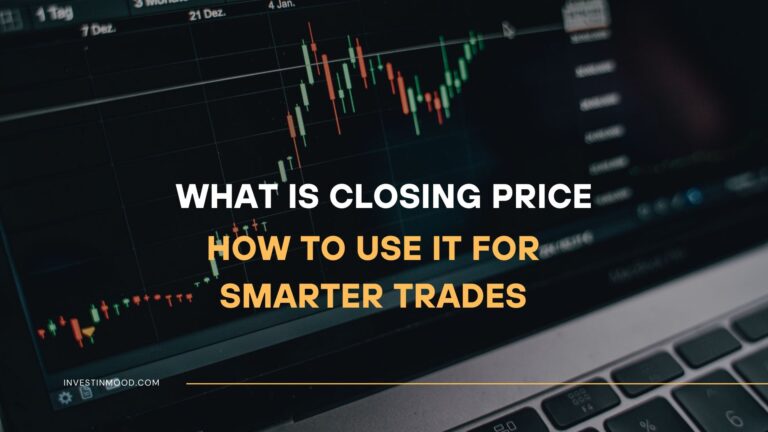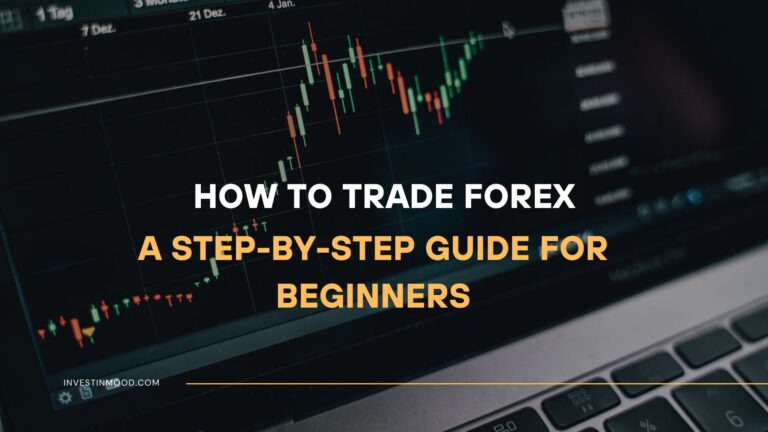
How to Trade Forex A Step-by-Step Guide for Beginners
Want to learn how to navigate the world’s largest financial market and potentially generate income from currency fluctuations? Learning how to trade forex is your gateway to the $7.5 trillion daily currency market. This comprehensive guide will walk you through the entire process, from understanding basic concepts to placing your first trade, so you can start your forex trading journey with confidence.
For traders in the US, UK, and Europe, understanding forex trading can help you diversify your investment portfolio and take advantage of global economic trends. Major currency pairs like EUR/USD, GBP/USD, and USD/JPY offer excellent trading opportunities during your local market hours.
Summary Table
| Aspect | Detail |
|---|---|
| Goal | Learn the fundamentals of forex trading and execute your first currency trade |
| Skill Level | Beginner |
| Time Required | 2-4 weeks to learn basics, ongoing for mastery |
| Tools Needed | Computer/smartphone, internet connection, demo trading account, economic calendar |
| Key Takeaway | Forex trading requires education, risk management, and emotional discipline – not just predicting price movements |
| Related Concepts |
Why Learning to Trade Forex is Crucial
Forex trading offers unparalleled opportunities for investors seeking diversification beyond traditional stocks and bonds. As the world’s largest and most liquid financial market, forex operates 24 hours a day, five days a week, providing flexibility that other markets can’t match. Learning how to trade forex systematically can help you capitalize on global economic trends and potentially generate returns in both rising and falling markets.
The Problem It Solves: Many new traders jump into forex without proper education, leading to significant losses. They struggle with emotional trading, poor risk management, and lack of a structured approach.
By following this step-by-step guide, you’ll develop a solid foundation in forex trading principles, learn to manage risk effectively, and gain the confidence to execute trades based on analysis rather than emotion.
Key Takeaways
What You’ll Need Before You Start Forex Trading
Before diving into live trading, it’s essential to gather the right tools and knowledge. Proper preparation significantly increases your chances of success in the competitive forex market.
Knowledge Prerequisites: Basic understanding of financial markets, economic indicators, and chart reading. Familiarity with concepts like supply and demand, interest rates, and geopolitical influences on currencies is beneficial.
Data Requirements: Real-time or delayed currency price quotes, economic calendar access, and historical price data for backtesting strategies.
Tools & Platforms: A reliable computer or mobile device, stable internet connection, reputable forex broker platform (like MetaTrader 4/5, cTrader, or TradingView), demo trading account, and economic calendar.
Commercial Intent Bridge: To access the forex markets, you’ll need a reliable trading platform. Many of the best forex brokers for beginners, like IG, OANDA, or Forex.com, offer user-friendly platforms with educational resources and demo accounts.
How to Use an Economic Calendar for Forex Trading
Economic events drive currency movements. Learn to trade them effectively:
High-Impact Events:
- Central bank interest rate decisions
- Inflation reports (CPI)
- Employment data (NFP)
- GDP releases
Trading Strategies Around News:
- Pre-news positioning
- Breakout trading after releases
- Fading initial spikes
- Avoiding trading during high volatility
How to Start Forex Trading: A Step-by-Step Walkthrough
Step 1: Learn the Basic Forex Terminology
Before placing any trades, you must understand the language of forex trading. Key terms include currency pairs (like EUR/USD), pips (percentage in point), lots (trade size), leverage (borrowed capital), margin (collateral for leverage), and spread (difference between buy/sell price).
Pro Tip: Create flashcards for these terms and test yourself regularly until they become second nature. Understanding the language is fundamental to comprehending trading strategies and market analysis.
Visual Aid Description: An infographic showing the components of a currency pair quote, with clear labels for base currency, quote currency, bid price, ask price, and spread. Include simple calculations showing how pips are measured.
Step 2: Choose a Reputable Forex Broker
Selecting the right broker is crucial for your trading success. Look for brokers regulated by major authorities (like FCA, ASIC, or CySEC), with competitive spreads, user-friendly platforms, educational resources, and responsive customer support.
Common Mistake to Avoid: Don’t choose a broker based solely on high leverage offers. Excessive leverage can amplify losses quickly. Focus instead on regulation, platform stability, and customer service quality.
Visual Aid Description: A comparison table showing 3-4 reputable forex brokers with key features highlighted: regulation status, minimum deposit, typical spreads on EUR/USD, available platforms, and educational resources.
Step 3: Open and Practice with a Demo Account
Every major broker offers demo accounts with virtual money. Use this to familiarize yourself with the trading platform, test strategies without risk, and develop confidence before trading real funds.
Pro Tip: Treat your demo account as if it were real money. Use proper position sizing and risk management from day one to develop good habits.
Visual Aid Description: A screenshot of a popular trading platform (like MetaTrader 4) showing a demo account balance, open positions, and the process of placing a new trade with clear annotations.
Step 4: Understand Fundamental and Technical Analysis
Successful traders use both fundamental analysis (economic factors, interest rates, geopolitical events) and technical analysis (chart patterns, indicators, price action) to make informed decisions.
Fundamental Analysis Example: When the US Federal Reserve raises interest rates, the USD typically strengthens against other currencies.
Technical Analysis Example: Learning to identify support and resistance levels, trend lines, and basic chart patterns like head and shoulders or double tops/bottoms.
Visual Aid Description: A split-screen image showing fundamental analysis on one side (economic calendar with key events highlighted) and technical analysis on the other (currency chart with common indicators like moving averages and RSI).
Step 5: Develop Your Trading Plan
A trading plan is your roadmap to success. It should include your trading goals, risk tolerance, preferred trading style (scalping, day trading, swing trading), criteria for entering and exiting trades, and risk management rules.
Key Elements of a Trading Plan:
- Risk per trade (typically 1-2% of account balance)
- Profit targets and stop-loss levels
- Trading times and sessions you’ll focus on
- Criteria for trade entry and exit
- Journaling process to review performance
Visual Aid Description: A flowchart showing the decision-making process in a trading plan: Market Analysis -> Trade Setup Identified -> Check Risk/Reward Ratio -> Position Size Calculation -> Place Trade with Stop Loss -> Monitor Trade -> Exit According to Plan.
Step 6: Execute Your First Trade and Manage Risk
Start with a small position size, use stop-loss orders to limit potential losses, and don’t risk more than 1-2% of your account on any single trade. Emotional discipline is as important as technical skill.
Example Trade:
- Currency Pair: EUR/USD
- Position: Buy (Long)
- Entry: 1.0750
- Stop Loss: 1.0720 (30 pips risk)
- Take Profit: 1.0810 (60 pips reward)
- Position Size: Calculate based on 1% account risk
Visual Aid Description: A annotated chart showing a complete trade setup with clear markers for entry point, stop loss, take profit, and the resulting profit/loss calculation.
Advanced Risk Management Strategies
Go beyond basic stop-loss orders with these professional techniques:
Position Sizing Methods:
- Fixed percentage risk (1-2% per trade)
- Kelly Criterion for optimal bet sizing
- Volatility-based position sizing (ATR method)
Portfolio-Level Risk:
- Correlation analysis between positions
- Maximum drawdown limits
- Daily/weekly loss limits
How to Use Forex Trading in Your Investment Strategy
Forex trading can serve different purposes in your overall financial strategy, from portfolio diversification to primary income generation.
Scenario 1: Portfolio Diversification: Use forex to hedge against currency risk in your international investments or to take advantage of global economic trends that differ from your local market.
Scenario 2: Income Generation: Develop a consistent trading strategy that generates regular returns. This requires more time commitment and advanced skills but can potentially provide a primary or secondary income stream.
Case Study: “In 2023, a trader focusing on interest rate differentials noticed the Bank of England was raising rates while the Bank of Japan maintained ultra-low rates. By going long on GBP/JPY with proper risk management, they captured a 15% move over six months while limiting drawdowns to 3% through careful position sizing.”
Creating an Effective Trading Journal
A trading journal is your most valuable improvement tool. Include these elements:
Trade Entry Details:
- Date, time, currency pair
- Entry rationale (technical/fundamental)
- Entry price, stop loss, take profit
- Position size and risk percentage
Trade Exit Details:
- Exit price and reason
- Profit/loss in pips and currency
- Emotional state during trade
- Lessons learned and improvements
Common Mistakes When Starting Forex Trading
Pitfall 1: Trading without a plan. Solution: Develop a detailed trading plan and stick to it consistently. Avoid impulsive decisions based on emotions.
Pitfall 2: Risking too much per trade. Solution: Never risk more than 1-2% of your account on a single trade. Use stop-loss orders religiously.
Pitfall 3: Overtrading. Solution: Quality over quantity. Wait for high-probability setups that match your strategy rather than forcing trades.
Pitfall 4: Chasing losses. Solution: After a losing trade, stick to your plan. Don’t increase position size trying to recover losses quickly.
Pitfall 5: Ignoring economic calendars. Solution: Always check the economic calendar before trading. Major news events can cause significant volatility that may trigger stop losses.
The Trader’s Mindset: Mastering Psychology for Success
Trading psychology is often the difference between success and failure. Learn to manage emotions, develop discipline, and maintain consistency.
Common Psychological Challenges:
- Fear of Missing Out (FOMO)
- Revenge trading after losses
- Confirmation bias
- Overconfidence after wins
Psychological Techniques:
- Meditation and mindfulness practices
- Trading journal for emotional tracking
- Pre-trade routines to enter focused state
- Regular breaks to prevent burnout
- 24/5 Market Access Trade almost around the clock during weekdays
- High Liquidity Easy entry and exit from positions with minimal slippage
- Leverage Availability Potentially amplify returns with borrowed capital
- Low Transaction Costs Competitive spreads compared to other markets
- Diversification Benefits Non-correlated asset class to stocks and bonds
- High Leverage Risks Can amplify losses as well as gains
- Complex Market Dynamics Multiple factors influence currency values simultaneously
- Emotional Challenges Requires significant discipline to avoid impulsive decisions
- Time-Consuming Successful trading requires continuous learning and market monitoring
- Regulatory Variations Different protection levels depending on your broker’s jurisdiction
Taking Your Forex Trading to the Next Level
Once you’ve mastered the basics, consider these advanced approaches to enhance your trading:
Algorithmic Trading: Develop or use pre-built trading algorithms that execute trades based on specific criteria without emotional interference. Platforms like MetaTrader offer built-in programming languages (MQL) for creating expert advisors.
Carry Trade Strategies: Borrow in low-interest-rate currencies and invest in high-interest-rate currencies to capture the interest rate differential, in addition to potential price appreciation.
Correlation Trading: Trade based on the relationships between different currency pairs or other asset classes. For example, AUD/USD often correlates with gold prices, while USD/CAD correlates with oil prices.
Conclusion
You now possess the foundational knowledge to begin your forex trading journey. By following the steps outlined in this guide, you can approach the currency markets with greater confidence and understanding. Remember that consistent profitability comes from disciplined execution of a well-tested strategy, not from random guessing or emotional reactions.
Start today by opening a demo account with a reputable broker and practicing the concepts you’ve learned. Focus on developing your skills without financial pressure, and only transition to live trading once you can consistently demonstrate profitability in simulated conditions.
To accelerate your learning curve, download our free Forex Trading Checklist that covers pre-trade, during-trade, and post-trade routines. And if you’re ready to open a trading account, check out our detailed comparison of the best forex brokers for beginners with exclusive offers.
How Forex Trading Compares to Other Markets
| Feature | Forex Trading | Stock Trading |
|---|---|---|
| Market Hours | 24 hours, 5 days a week | Exchange hours only (typically 6.5-8 hours) |
| Liquidity | Extremely high ($7.5 trillion daily) | Varies by stock (generally lower) |
| Commission Structure | Typically spread-based | Typically commission per trade |
| Leverage Availability | High (up to 30:1 or more retail) | Lower (typically 2:1 for day trading) |
| Number of Instruments | Limited major/minor pairs | Thousands of individual stocks |
| Primary Analysis Focus | Macroeconomic factors | Company fundamentals |
Frequently Asked Questions About Forex Trading
The minimum deposit varies by broker, but many allow you to start with as little as $50-$100. However, it’s recommended to start with at least $500-$1,000 to properly implement risk management strategies without being forced to use excessive leverage.
This depends on your trading style. Scalpers may need to watch screens for hours daily, while swing traders might only need a few hours per week. As a beginner, plan to spend 5-10 hours per week learning and practicing before transitioning to live trading.
Yes, it’s possible but challenging. Consistent profitability requires significant education, practice, emotional discipline, and proper risk management. Most successful traders treat it as a business rather than a hobby and have multiple years of experience.
The most active and volatile periods are during market overlaps: London-New York overlap (8:00 AM – 12:00 PM EST) and Tokyo-London overlap (2:00 AM – 4:00 AM EST). These periods typically offer the best trading opportunities.
Stick with well-regulated brokers in reputable jurisdictions (FCA, ASIC, CySEC), avoid “guaranteed profit” schemes, be wary of signal sellers with unbelievable track records, and remember that if it sounds too good to be true, it probably is.
Related Guides You Should Read Next
Forex Trading Strategies for Beginners
Technical Analysis Guide for Forex Traders
Risk Management in Forex Trading




